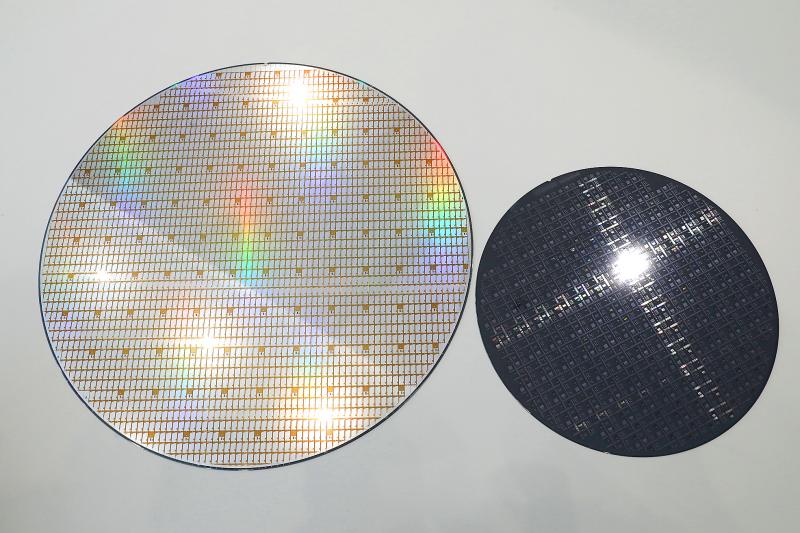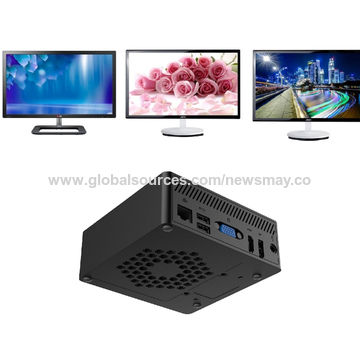148.55mm² on 14nm can't be very expensive (IdeaPad 1 routinely is <$200).
It is more expensive than 28nm 107mm2 and 28nm 125mm2.
Cost per 0.1B gates increased with 14nm.
Cost per mm2 increased with 14nm.
Cost of design increased with 14nm.
However, with 22FDX/12FDX;
Cost per 0.1B gates is inline with decreasing.
Cost per mm2 is inline with decreasing.
Cost of design is inline with decreasing.
Also: IdeaPad 1 (11”, AMD) is DISCONTINUED. 14w Gen2 vs Gen1 has Pollock using lower speed DDR4, and lower resolution 768p. So, activating premium features is in favor of an A6-9220C refresh instead.
Full AIO/Laptop Intel competitor against 14w and Ideapad 1 series is the 500w Gen3/ALLDOCUBE N5100 laptops at around ~400 USD in comparison.
I was trading off the development costs against the porting costs. The CCX for Renoir is a finished design. The VEGA iGPU is a modular design by nature. There's no need to include the 16x PCIe lanes for the GPU, just retain the pair of x4 groups and shrink the I/O section accordingly. One Zen2 4 core CCX, 3-4 VEGA CUs, a few USB ports, a pair of SATA ports and a pair of four lane PCIe 3 complexes. Use the high density, LP library options for GF12+ to keep from having to spend to convert away from a FF process. It'll certainly be larger than Raven2/Dali, probably smaller than Raven Ridge due to the increased density of GF12+. That would handle the bottom of the market for a long time to come.
The problem is still FinFETs are expensive, backports are more expensive than shrinks, etc.
It is a better case to succeed Stoney with something just as cheap as it, if not cheaper with lower mm2.
There is more profits for a new design from fresh strictly built to maximize all the strong points of FDSOI, than doing an old-new design on FinFETs.
Basically, everything post-Stoney must cut costs down the line. From AMD to OEM to Consumers to make the cheapest product allowing for 1080p plus displays, 8 GB+ rams, NVMe SSD bga or m.2, etc.
If we use IBS numbers:
150 mm2 14nm FinFET = ~$15 per die... so $25 selling point ~~ just $10 margin.
125 mm2 28nm Bulk = ~$4 per die... $21 margin.
sub-125 mm2 22nm/12nm FDSOI = ~$3-$2 per die, etc.
The benefit of FDSOI is the potential absorbing of motherboards features: FIVR on-die, Audio codec on-die, etc. So, not only is it cheaper for AMD to make, it comes out cheaper for Motherboards as well.
GlobalFoundries is running 14nm FinFET at a loss, unless they want to make profits there is going to be a price hike. However, 22FDX is running at a profit, it is unlikely to get a price hike. With 14nm FinFET's price hike, it also comes with the decrease of volume of bulk FinFET wafers.
As Malta needs to get rid of its loss by adopting;
RH90 FDSOI(Skywater/Mil agreement)
RF45e/45SPCLO FDSOI(Shift IBM process to Malta).

www.sas-globalwafers.com
Bringing Taiwan to the World and the World to Taiwan

www.taipeitimes.com
"GlobalWafers Co., Ltd. (GWC) today announced a $800 million agreement with GLOBALFOUNDRIES® (GF®), the global leader in feature-rich semiconductor manufacturing, to add 300mm silicon-on-insulator (SOI) wafer manufacturing and expand existing 200mm SOI wafer production at GWC’s MEMC facility in O’Fallon, Missouri.
In particular, the 300mm wafers made at GWC’s MEMC site in Missouri will be used at GF’s most advanced manufacturing facility, Fab 8 in Malta, New York."
For example SOITEC's 300mm FDSOI pilot-line in Singapore was only $40 mil. With further Bernin II FDSOI investment not exceeding $180 mil.
GWC buying SunEdision's SOI part includes the license and patent agreement with SOITEC.
/PRNewswire/ -- Soitec (Euronext) and SunEdison, Inc. (NYSE: SUNE) announced today that they have entered into a patent cross-license agreement relating to...

www.prnewswire.com
GlobalFoundries 6G Plan does not appear to include FinFETs:
"GLOBALFOUNDRIES (GF) is taking steps to establish a leadership position in 6G by collaborating with top researchers at leading universities to leverage the unparalleled benefits of its FD-SOI, RF-SOI and SiGe platforms"
So any semi-custom with an integrated 6G modem on die would need to fit in one of those three.
So, GlobalFoundries selling 14nm FinFET at a loss is bad for GFS-stock.
AMD selling fat-core 14nm FinFET with higher cost and reduced margin gap is bad.
5.5 mm2 for one Zen core.
~2.0 mm2 for one Jaguar core.
The two prior WSA agreements actually return to 1st WSA where AMD is required to support certain nodes. With the most recent WSA actually getting rid of AMD's FinFET commitment, hence no 12LP+ at AMD. Thus, allowing IOD's to move to TSMC 16nm or Samsung 14nm instead. However, AMD's commitment to FDX is still present.
Switching 14nm FinFET to something profitable say 22FDX or 12FDX since there is a source of FDSOI from Missouri.
Lower price for GlobalFoundries, carries over to lower price on the wafer given a smaller die. Which has cost distributed over many more dies.
CMT + 12FDX might allow one to fit four cores into the area of one Zen core to two Zen cores on 14nm
5.5 -> ~2.0 -> 1.375 or 2.7 per core. ==> Power-efficiency or IPC.
11 mm2 -> ~8.1 -> 5.5 or 11 per module. => Many cores in same area or same core to thread.
This scales across to CMT + 22FDX as well. Basically, two cores to two threads in the same area.
14.48 mm2 2c Excavator
6.2 mm2 2c Jaguar
AMD would need to use CMT on 6.2 mm2 2c and the shrink of 114CPP/90Mx/9T to 104CP/80Mx/8T(50% logic and 10% SRAM scaling) to get two cores within 5.5 mm2.









